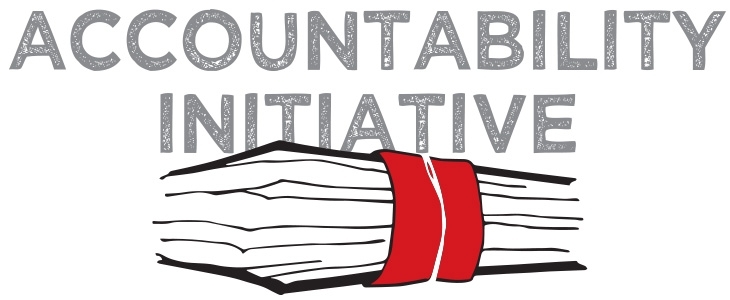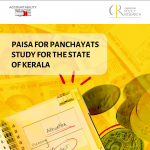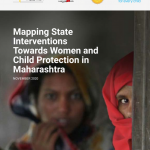
Harnessing IT for good governance
17 September 2009
Over the past decade or so, there have been islands of e-Governance initiatives in the country at the national, state, district and even block level. Some of them have been highly successful and are ready for replication across other states. Experiences from successes as well as the failures of the various initiatives play an important role in shaping the e-governance strategy of the country. As part of the Accountability Initiative’s research agenda – highlighting good governance practices across the country, I had the opportunity to study the e-governance initiative undertaken by the Rajkot Municipal Corporation (RMC) in Gujarat.
In our study, we tried to answer a host of questions including why the initiative was undertaken in the first place, how it got started, by whom, what the incentives were etc; and attempted to shed light on understanding how an e-governance initiative works, and how using information technology can improve the efficiency and accountability of services at no great cost. The successful development of such initiatives has valuable lessons for increasing accountability in civic management across the country.
There has been an increase in efficiency and the collection of dues, making many transactions paperless. As a result the RMC is saving Rs.30 – 40 lakh per year.
I interviewed key officials in the Municipal Corporation and at a later stage some elected representatives in order to gauge what they think of the new system, as well as interviewed IT officials who actually designed the software.
It is under the aegis of the Urban Renewal mission on City Governance that the entire E-governance initiative has taken off. The RMC has developed an interactive website as well as set up an SMS –based complaint management system. The RMC has also set up five City Civic Centres (CCCs) where people can go to access various Municipal services and a 24×7 call centre where complaints can be called in and are instantly logged into the Management Information System. Engineers on the ground instantly get SMSs informing them of these complaints and once they are resolved, they can SMS this back to this Management Information System. This web-based accessible system enables the tracking of the service delivery at every stage, facilitates the flow of information, and thus strengthens the relations of accountability amongst the various actors.
Interestingly, in my interviews with the staff it came up that the inspiration for the SMS alerts system came from banking alerts that an RMC member used to get on his cell-phone! However, it was evident that the biggest factor which drove officials towards developing the online and telephonic system to address problems was that through this medium people have stopped coming to the RMC offices for simple queries and this gives the officers more time to address ‘real’ issues. Necessity, in this case, was indeed the mother of invention. For example, simple tasks like tax calculations etc used to take a lot of time and effort and now these can easily be done through the website. All the software development for the complaints system at the CCCs was done in-house by the staff of the RMC. The team is continuously in touch with the end users to minimise problems with the website. All of this saves costs.
As per the Nagrik Adhikar Patrak (Citizen Charter), the time limit for the complaint redressal is fixed and if during that time limit the complaint is not solved, complaint details are automatically escalated to next level officer; there too the time limit is fixed, if it is not solved then the complaint details are escalated to the highest authority. This is taken care of by the e-Governance software. In some cases, where delay in resolving the complaint is unavoidable (ex. Major drainage operations etc), the call centre records this and informs the complainant of such delay.
The effective use of IT services in government administration can greatly enhance existing efficiencies, drive down communication costs, and increase transparency in the functioning of various departments
Some of the achievements of the initiative so far have been: 80% public related services (like issuance of computerized Birth and Death certificates since 1973) and back office services (which help in strengthening of administrative process) are computerized; more than 60 different utilities are computerized; the City Civic Centres are online. There has been an increase in efficiency and the collection of dues, making many transactions paperless. As a result the RMC is saving Rs.30 – 40 lakh per year. Auditing has become much easier; and citizens do not have to make complaints by coming to the offices anymore.
What about the effects of this system on accountability within the RMC? Since data on complaints received by day/ward/department and officer-wise responses is now easily collected and available, the track record and efficiency with which officers dispose of their complaints is accessible throughout the system. And this could arguably lead to better appraisal of their performance, and hence affect their accountability. In this sense, it is clear that this is quite a powerful tool – the monitoring of outcomes is in-built in the system and the RMC now has the ability to take non-performing officials to task.
The effective use of IT services in government administration can greatly enhance existing efficiencies, drive down communication costs, and increase transparency in the functioning of various departments. It also gives citizens easy access to tangible benefits, be it through simple applications such as online form filling, bill sourcing and payments, or more complex applications. And as is clear from the efforts undertaken by the Rajkot Municipal Corporation, such efforts can be done on a small-scale by a group of dedicated individuals without major resources.
Abhijit Patnaik is Senior Researcher at Accountability Initiative.





